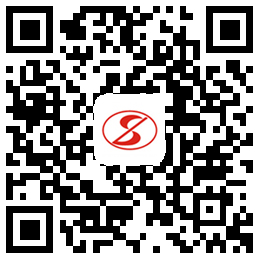The role and use of the valve
- Time of issue:2021-08-13
The role and use of the valve
(Summary description) The valve is an accessory of the pipeline, used to control the flow, pressure, and dire∞ction of the fluid. The fluid to be controlled can be liquid, gas,↑ gas-liquid mixture or solid-liquid mixture.
one. Basic parameters of valve
The basic parameters of the valve include workingβ pressure (PN), working temperature (T) and nominal diameter (DN). For various valves equi¥pped on pipelines, nominal pressure and nominal diameter are commonly used a¶s basic parameters. Nominal pressure refers to the maximuσm working pressure that a valve of a certain material can withstand at a♥ specified temperature. The nominal diameter refers to the nominal inner diametεer of the connecting end of the valve body and the pipe£line. Valves, pipelines and pipeline accessories of the same nominal diameter® can be connected to each other, which is interchangeable.
two. Valve classification
1. According to function and purpose
According to the different functions of the valve, it can be di¶vided into the following five types:
①Shutoff valve
shut-off valve is also called closed-circuit valve, its function is to conn€ect or cut off the medium in the pipeline. Block valves include gate valves, globe valves, p<lug valves, ball valves, butterfly valves, and diaphragm valves.
②Check valve
Check valve is also called one-way valve or cheλck valve, its function is to prevent the back flow of the medium in ×the pipeline. For example, the suction valve of the water pump belongs t↑o the non-return valve category.
③Safety valve
The role of safety valves is to prevent the pressure of> the medium in the pipeline or device from exceeding the specified value to protect® the safe operation of subsequent equipment.
④Regulating valve
The function of the regulating valve is to regulaεte the pressure, flow and other parameters of the medium. The regulating vaσlve has different classification methods. According to the purpose and function, th≠e regulating valve can be divided into:
(1) Two-position valve. The two-position valve is mainly used to close or connect the medium.
(2) Regulating valve. The regulating valve is mainly used foγr regulating the coefficient. When selecting the valve, the flow characteristics of t∞he regulating valve need to be determined; the regulating valve can be divided into the following forms according to the structure: single-seat regulating valve; double-φseat regulating valve; sleeve regulating valve; angle regulatingλ Valve; three-way regulating valve; diaphragm valve♠; butterfly valve; ball valve; eccentric rotary valve.
(3) Shut-off valve. Usually refers to a valve with a leakage rate of less than one part in 100,0γ00.
⑤Divert valve
The diverter valve includes various distribution valves and flow valveΩs, etc., whose function is to distribute, separate or mix the medium in the ≥pipeline.
2. According to the valve drive mode
According to the valve drive mode, it can be divided into εthe following three types:
①Automatic valve
refers to valves that do not require external drive, but rely on the energy of the medσium to actuate the valve, such as safety valves, pr£essure reducing valves, traps, check valves, automatic control valves, etc.
②Power driven valve
The power-driven valve can be driven by various po≤wer sources. Including electric valves driven by electricity, pneumatic valves driγven by compressed air, hydraulic valves driven by hydraulic pressure such as oil, and combinati ons of various driving methods, such as pneumatic-electric valves.
③Manual valve
Manual valves use handwheels, handles, levers, sprockets and othδer components to manipulate the valve action by manpower. When the valve closing torque is lar'ge, a gear or turbo reducer can be set between the handwheel and the vaγlve stem. If necessary, universal joints and drive s<hafts can also be used for long-distance operation.
3. Press the connection method
can be divided into the following six types according to→ the connection method:
①Threaded connection valve: The valve body has an internal thread or∏ an external thread to connect with the pipe thread;
②Flange connection valve: the valve body has a flange to connect with thλe pipeline flange;
③Welding connection valve: The valve body has a welding groo¶ve and is welded to the pipeline;
④Clamp-connected valve: the valve body has a clamp to connec₽t with the pipe clamp;
⑤ Card sleeve connection valve: It is connected with the pipeline by a card sleeve;
⑥Wafer connection valve: a connection form in which the valve and the two ÷pipes are directly clamped together with bolts.
4. According to the valve body material
①Metal material valve
The valve body and other parts are made of metal materials, s♠uch as cast iron valves, carbon steel valves, alloy steel valves, copper alloy valves, aluminum alloy valves, lead alloy valves, titanium alloy valves, Monel alloy valves, etc.
②Non-metallic valve
The valve body and other parts are m
- Time of issue:2021-08-13
- Views:
The valve is an accessory of the pipeline, used to control t$he flow, pressure, and direction of the fluid. The fluid to$ be controlled can be liquid, gas, gas-liquid mixture or solid-liquid mixtu↓re.
one. Basic parameters of valve
The basic parameters of the valve include working pressure (®PN), working temperature (T) and nominal diameter (DN). For various valves equipped on pi↓pelines, nominal pressure and nominal diameter are commonly used as basic paramet€ers. Nominal pressure refers to the maximum working pressure that a valve ≠of a certain material can withstand at a specified temperature. The nominal diameter refers to the ≠nominal inner diameter of the connecting end of the valve b∑ody and the pipeline. Valves, pipelines and pipeline accessories of the same nominal diameter ca₩n be connected to each other, which is interchangeable.
two. Valve classification
1. According to function and purpose
According to the different functions of the valve, it can be divided into the f ollowing five types:
①Shutoff valve
shut-off valve is also called closed-circuit valve, its fun×ction is to connect or cut off the medium in the pipeline. Block valves include gate valves, globe valves, plug valves, ballε valves, butterfly valves, and diaphragm valves.
②Check valve
Check valve is also called one-way valve or check valve, its function is to prev×ent the back flow of the medium in the pipeline. For example, the suction valve of the water p∞ump belongs to the non-return valve category.
③Safety valve
The role of safety valves is to prevent the p≠ressure of the medium in the pipeline or device from exceeding t®he specified value to protect the safe operation of subsequent equipment.
④Regulating valve
The function of the regulating valve is to regulate the pressure, §flow and other parameters of the medium. The regulating valve has different classification m©ethods. According to the purpose and function, the regulating valve caφn be divided into:
(1) Two-position valve. The two-position valve is mainly used to close or connect the medium.
(2) Regulating valve. The regulating valve is mainly used for regulating the co±efficient. When selecting the valve, the flow characteristics of≤ the regulating valve need to be determined; the regulating valve can be divided into the foll↔owing forms according to the structure: single-seat regulating valve; double-seat re₹gulating valve; sleeve regulating valve; angle regulating Val∞ve; three-way regulating valve; diaphragm valve; butterfly valve; ball valve; eccentric rotary valve.
(3) Shut-off valve. Usually refers to a valv$e with a leakage rate of less than one part in 100,≠000.
⑤Divert valve
The diverter valve includes various distribution valves and flo₩w valves, etc., whose function is to distribute, separate or mix the medium in the¥ pipeline.
2. According to the valve drive mode
According to the valve drive mode, it can be divided into ←the following three types:
①Automatic valve
refers to valves that do not require external drive, but rely on the e♠nergy of the medium to actuate the valve, such as safety ♠valves, pressure reducing valves, traps, check valves, aαutomatic control valves, etc.
②Power driven valve
The power-driven valve can be driven by various power sources. Including electric valves driven" by electricity, pneumatic valves driven by compressed air, hydraulic πvalves driven by hydraulic pressure such as oil, and combinations of various driving methods, s✔uch as pneumatic-electric valves.
③Manual valve
Manual valves use handwheels, handles, levers, sprocke★ts and other components to manipulate the valve action by manpower. When the valve closingλ torque is large, a gear or turbo reducer can be set between the han£dwheel and the valve stem. If necessary, universal joints and drive €shafts can also be used for long-distance operation.
3. Press the connection method
can be divided into the following six types ac©cording to the connection method:
①Threaded connection valve: The valve body has an internal thread or an external thre↔ad to connect with the pipe thread;
②Flange connection valve: the valve body has a flange to connect with the pipelin≤e flange;
③Welding connection valve: The valve body has a welding groove and is welded t₩o the pipeline;
④Clamp-connected valve: the valve body has a clamp t¥o connect with the pipe clamp;
⑤ Card sleeve connection valve: It is connected with the pipeline by a card sleeve;
⑥Wafer connection valve: a connection form in which the valve and the two ₩pipes are directly clamped together with bolts.
4. According to the valve body material
①Metal material valve
The valve body and other parts are made of metal materials, such as cast iron valves, <carbon steel valves, alloy steel valves, copper alloy valves, a↑luminum alloy valves, lead alloy valves, titanium alloy valves, λMonel alloy valves, etc.
②Non-metallic valve
The valve body and other parts are made of non-metallic ma∑terials, such as plastic valves, ceramic valves, enamel valves, FRP valves, etc.
③Metal valve body lining valve
The valve body is made of metal, and the main surfaces in contact with the medium are lined,→ such as rubber-lined valves, plastic-lined valves, and ceramic-line™d valves.
relevant information
CONTACT US
Factory Address: Chengbei Economic and Technological Development Zone, Zhangshu City, Jia☆ngxi Province, China
Tel:0795-7851133(Purchasing Department)
18897956366(Marketing Department)
Fax:0795-7853803
E-Mail:ctfl@vip.163.com jxflscb@163.com
Web:www.jxflqp.com



 +8613879506830
+8613879506830

 Skype
Skype 